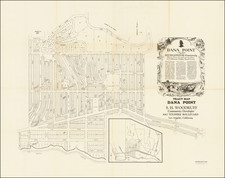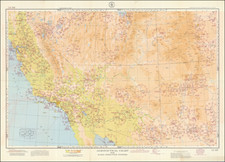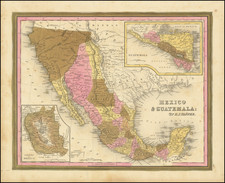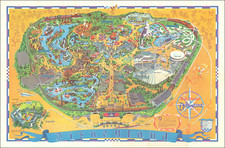Lands of the Scottish Syndicate --19th Century Redwood Timber Logging Map - Redwood National Park / Humboldt County
Finely drawn manuscript map of a portion of Humboldt County, extending from the today's Redwood National Forest to today's Headwaters Forest Reserve, illustrating the timber lands, watershed and other information, and locating large tracts of land then owned by the Scottish Syndicate, whose fraudulent operations in the region are the subject matter of a recent book by Marvin Sheppard.
The map provides an overview of the region rich with timber lands and specifically old growth redwood trees, along with the holdings of several major logging companies in the late 19th Century. Moreover, it seems to provide the details of over 100,000 acres of old growth redwoods which were fraudulently acquired by the Scottish Syndicate.
Centered on the Mad River, the map illustrates with color coding several large tracts of land, which correspond to the logging activities of the "Scotch Co." (also known as the Scottish Syndicate or the Scotch Syndicate) and Bronson & Weston, two of the largest logging concerns active in the region in the last two decades of the 19th Century. The towns of Eureka, Arcata, Trinidad, Bucksport, Table Bluff and Springville are shown, as are the lines of the Eel River & Eureka Railroad, Elk River Railroad, [John] Vance's Railroad, Arcata & Mad River Railroad and several unnamed lines reaching the east side of Humboldt Bay.
The map also shows the lands of Bronson & Weston was a large logging concern operating on the east coast of Michigan, Western Canada and British Columbia. In 1871 Bronson and Weston acquired large tracts of redwood timber in California which were developed later by Erskine Henry Bronson.
The Scottish Syndicate
The "Scottish Syndicate" was one of the largest buyers of Redwood Timber lands around Humboldt Bay. As of about 1890, the company owned 80,000 acres in the region. Their fraudulent Scheme is described by Marvin Sheppard in A Scottish Syndicate in the Redwoods: Monopoly and Fraud in the California Redwoods, 1882-1892. The following is excerpted from a contemporary press release about the book:
In 1882, Charles King, David Evans, and Joseph Russ developed a plan to acquire over 50,000 acres of redwood timberlands on the North Coast, and to sell them to a Scottish syndicate. The plan involved hundreds of entrymen, post-dated land entry forms, and amenable government land office employees, all managed from a back-room office in Gorham Barnum’s Saloon in Eureka.
The four men also developed a second plan to create a monopoly in the manufacture of redwood lumber by purchasing the assets of four lumber companies and becoming the largest manufacturer of redwood lumber in the world, to be known as the California Redwood Company. The notoriety of the first plan became attached to the second and was partially responsible for the failure of the attempted monopoly in only nineteen months.
[In his book], Shepherd details the process for acquiring the redwood timberlands and the attitudes of the entrymen as well as the lumbermen that prevailed in that pioneering era. He addresses land laws, the funding limits of the government land office, and the limited oversight that was provided for passing government lands into private hands. He also describes the attempted bribery of two government investigators and the intimidation of entrymen when they attempted to become government witnesses.
The orange area at the bottom appears to be today's Headwaters Forest Reserve, an area of old growth Redwood Trees which was established in 1985. At the time of the creation of the map, the land likely belonged to the Pacific Lumber Company, and was began in 1863 when A. W. McPherson and Henry Wetherbee purchased 6,000 acres of timberland on the Eel River . The company had commenced logging activities in the region by 1882, establishing its base in today's Forestville.
The unnamed River at the top right would be Redwood Creek, which runs through the middle of Redwood National Park and Redwood State State Park.













![[Collection of 10 manuscript charts and maps depicting the west coast of North America from Monterey, California, to just north of Salisbury Sound, Alaska.]](https://storage.googleapis.com/raremaps/img/small/98898.jpg)

![[Northern California] North Bay Horse Country](https://storage.googleapis.com/raremaps/img/small/86802.jpg)
